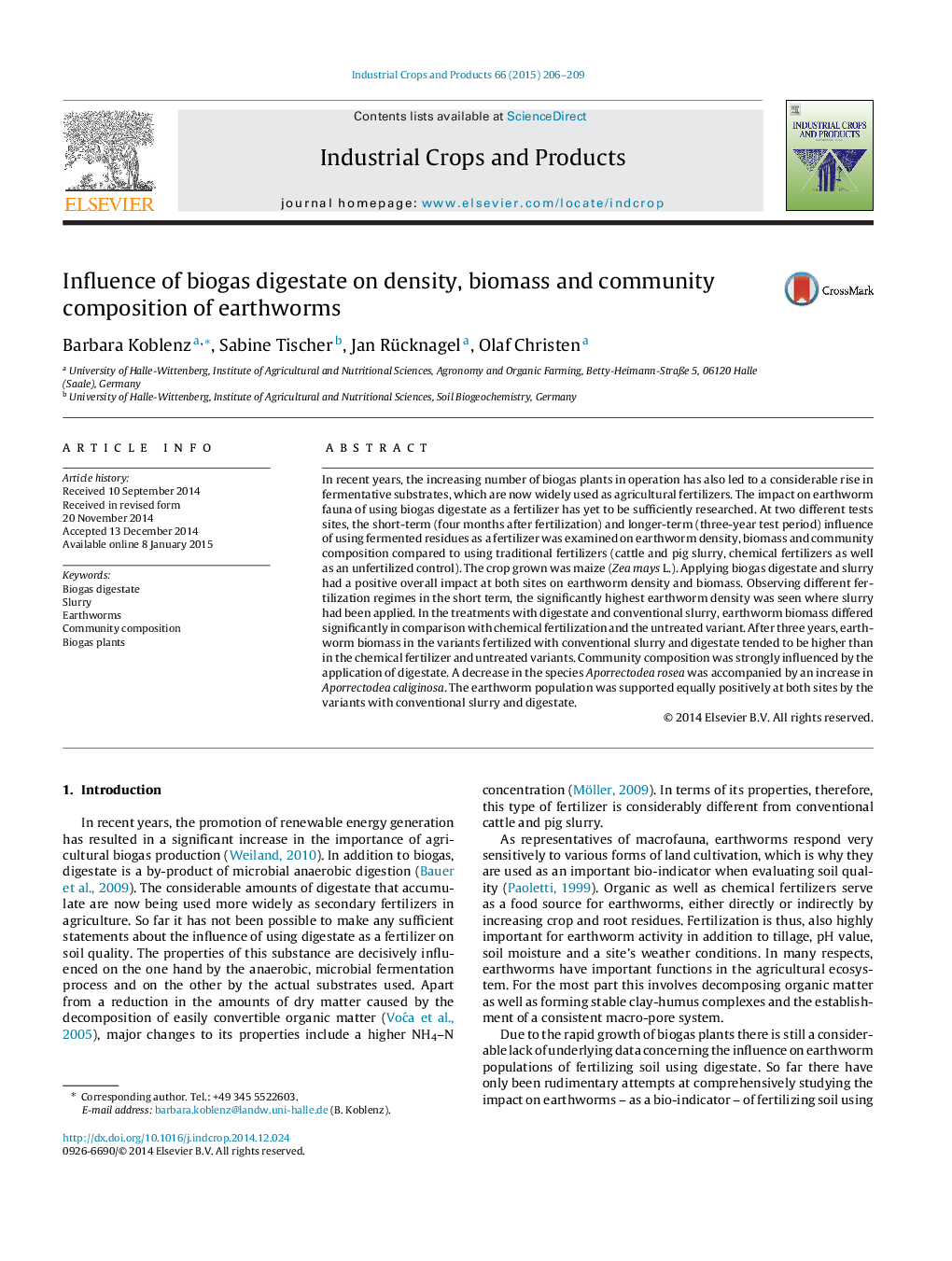| Article ID | Journal | Published Year | Pages | File Type |
|---|---|---|---|---|
| 4513223 | Industrial Crops and Products | 2015 | 4 Pages |
•In all study trials both manures stimulate the earthworm population.•Earthworm density under digestate was similar to conventional slurry.•Applying digestate and slurry had a positive impact earthworm density and biomass.•Mineral fertilizers had negatively affected earthworm fauna.•Community composition was strongly influenced by the application of digestate.
In recent years, the increasing number of biogas plants in operation has also led to a considerable rise in fermentative substrates, which are now widely used as agricultural fertilizers. The impact on earthworm fauna of using biogas digestate as a fertilizer has yet to be sufficiently researched. At two different tests sites, the short-term (four months after fertilization) and longer-term (three-year test period) influence of using fermented residues as a fertilizer was examined on earthworm density, biomass and community composition compared to using traditional fertilizers (cattle and pig slurry, chemical fertilizers as well as an unfertilized control). The crop grown was maize (Zea mays L.). Applying biogas digestate and slurry had a positive overall impact at both sites on earthworm density and biomass. Observing different fertilization regimes in the short term, the significantly highest earthworm density was seen where slurry had been applied. In the treatments with digestate and conventional slurry, earthworm biomass differed significantly in comparison with chemical fertilization and the untreated variant. After three years, earthworm biomass in the variants fertilized with conventional slurry and digestate tended to be higher than in the chemical fertilizer and untreated variants. Community composition was strongly influenced by the application of digestate. A decrease in the species Aporrectodearosea was accompanied by an increase in Aporrectodea caliginosa. The earthworm population was supported equally positively at both sites by the variants with conventional slurry and digestate.
